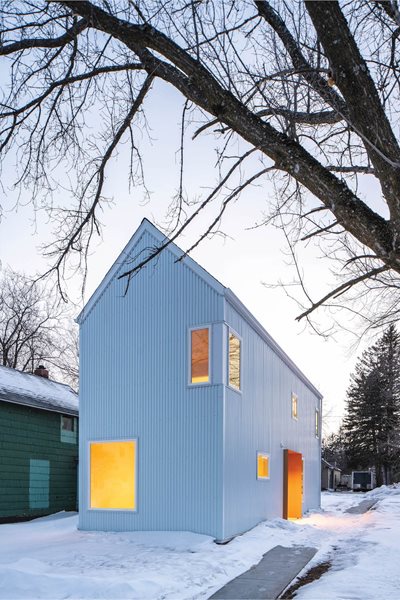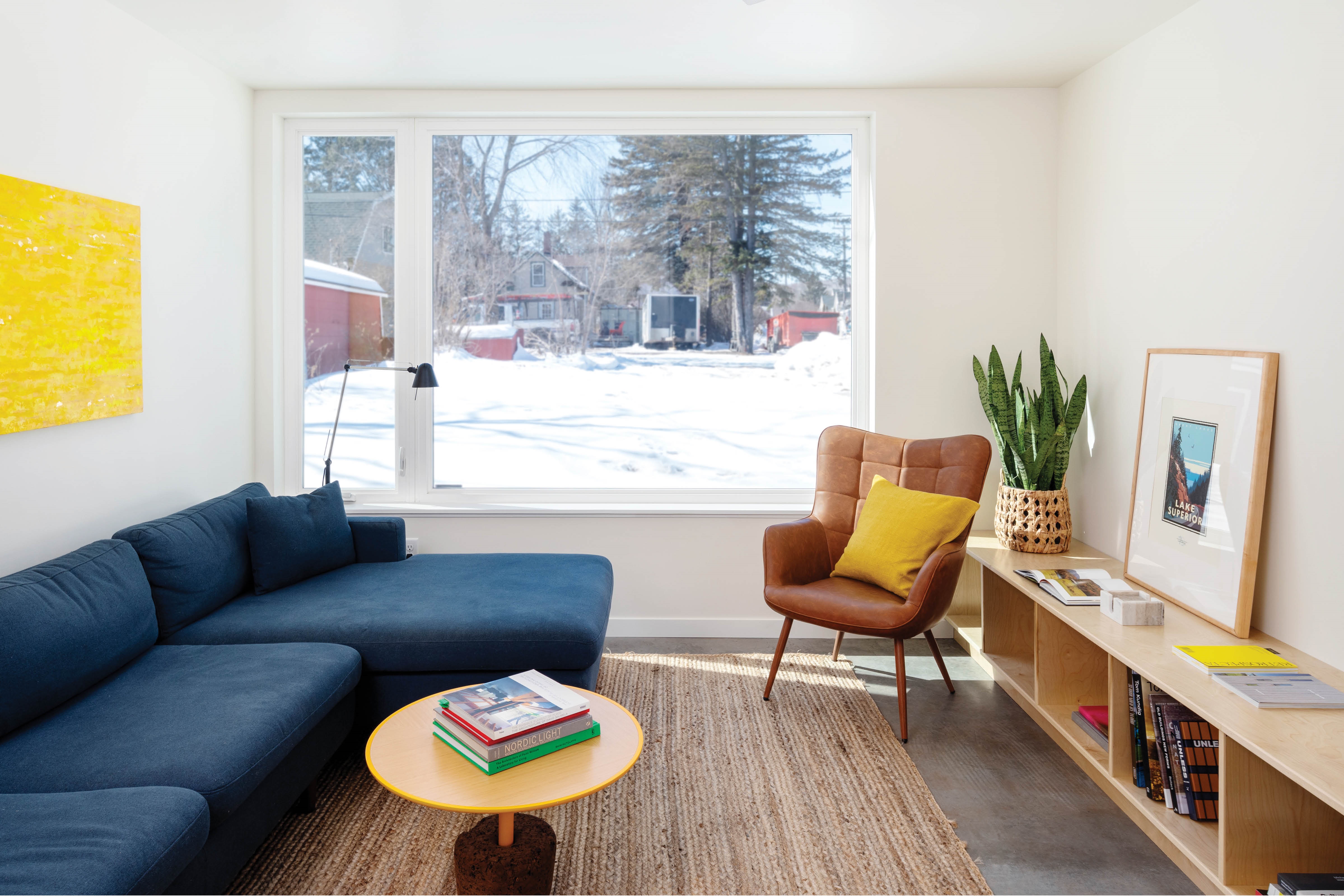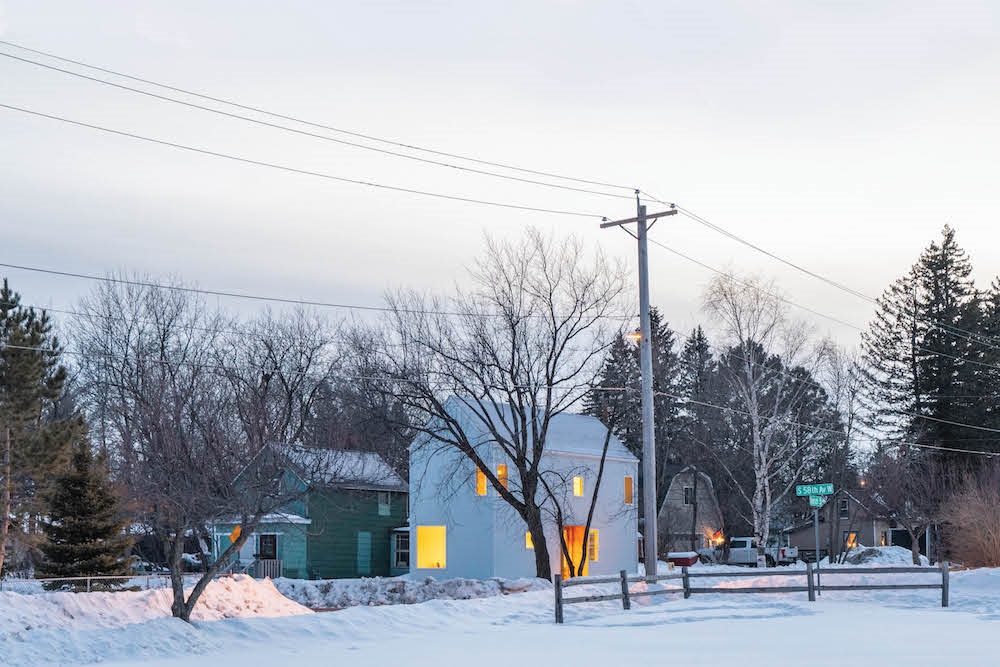Staff at One Roof Community Housing call it "The Skinny House." The Duluth home – which the NeighborWorks network organization sold at the end of May – is part of a community land trust, built on a lot that most developers had passed over because of its size.

Benjamin Olsen and Ryan Hughes of Office Hughes Olsen took on the design challenge and partnered with One Roof for the project. The home, 1,000 square feet, with two bedrooms and one and a half baths, can serve as a prototype for other city lots. It appraised for $220,000; the city helped with a $60,000 subsidy so buyers only had to finance $160,000.
Narrow lots like this pepper Duluth, Olsen says. "This gives us a chance to think of densifying the city, rather than expanding it."
Olsen wanted to show that you could build a single family home that was only one-room wide. "It was

The buyers are a family of four who loved the modern design and the neighborhood, which was full of young children. "We made an offer on this home because it checked nearly every box of expectations we had," says Eva Pryor. She and her husband had been searching for over a year and made multiple offers that were overlooked in the competitive housing market.The couple had heard of a community land trust, but didn't know much about it until they took a homebuyer class through One Roof. The timing was fortuitous: Pryor's husband works with the National Guard. His goal was to see his family safely settled before he deployed.
NeighborWorks network organizations currently hold over 3,000 homes in shared ownership through a shared equity model – a model of affordable housing where a family agrees to limit the proceeds on their home so that other income-qualified families can access the same home affordably should they choose to sell. The community land trust is just one model of shared equity housing.
Shanti Abedin, NeighborWorks' director of Shared Equity Housing, says community land trusts are a solid path to homeownership that lasts beyond one family and one generation. "Shared equity provides permanent, long-lasting affordability," she says. "It can help stabilize communities by keeping families with lower incomes from being displaced. And it can help build wealth for community members who otherwise wouldn't likely be able to do so."

"We're all excited with how it worked," Philbin says. His hope is to build three or four houses like this per year, though it will take a different type of infill – of funding – to cover the gap between the appraised value and the cost to build.
A big benefit of the project is that the houses join established neighborhoods with existing infrastructure. By building these properties as part of the land trust, developers can work with buyers away from the bidding wars that accompany today's housing market. "We can create an affordable home and give people time to apply and not feel panicked," Philbin says. "It makes the homebuying process more sane."

